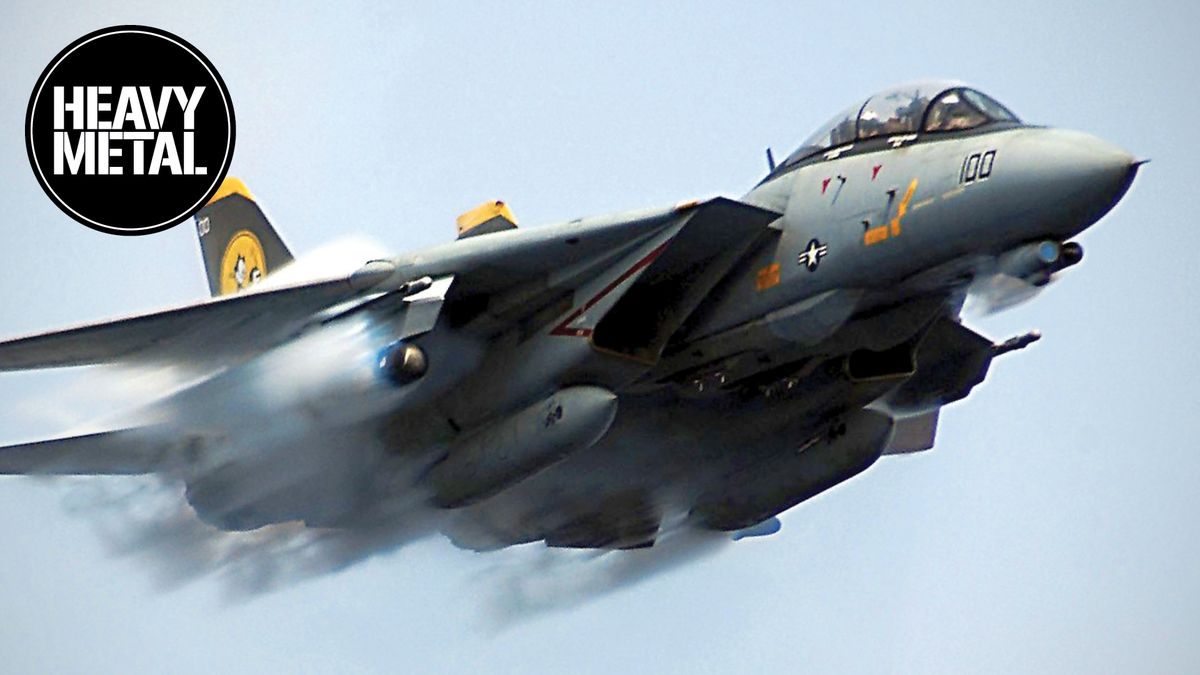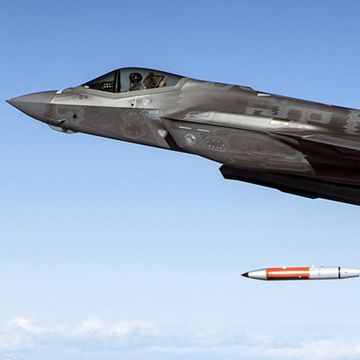- The Navy has issued a noise advisory for the Chesapeake region in Virginia.
- The danger zone stretches nearly six miles toward the Atlantic Ocean, and will be closed to private boat traffic.
- The Navy hasn’t said what it’s testing, but this is the same location where the service tested its raygun prototypes.
The U.S. Navy is testing something big and loud over the Potomac River this week. The service just issued an advisory over “munitions testing” in Virginia’s Tidewater region, closing sections of the river to boat traffic and warning that civilians could hear loud noises. The projected source of the loud noises is the same range where the service first tested its experimental raygun.
➡ You love badass military tech. So do we. Let's nerd out over this stuff together.
The advisory, published by Naval Surface Warfare Center, Dahlgren Division and republished by Maryland’s The Bay, states, “NSWCDD plans to conduct range testing, Tues. - Fri., Dec. 1-4 from 8 a.m. to 5 p.m. that may produce very loud noise in communities surrounding Naval Support Facility Dahlgren.” The Twitter user @lfx160219 also posted the advisory:
NSWC Dahlgren warns of “loud” noises on Tuesday, December 1, on the eastern side of the site and downrange. The Potomac River will be restricted to naval traffic for 10,000 yards downrange, or a distance of 5.68 miles.
Things apparently ramp up Wednesday and Thursday, with the noise advisory increasing to “very loud.” On Wednesday, the closed section of the river briefly ramps up to 15,000 yards, or 8.5 miles, before dropping back to 5.68 miles. The testing continues through Friday, December 4. Make your boating plans in the Chesapeake accordingly.
What is this mysterious munition? The advisory doesn’t say, but it does reveal the test is taking place at Dahlgren’s “raygun Building 1410.”
The main suspect in this case is, of course, a raygun. Long the dream of science fiction, rayguns use electricity to generate very strong electromagnetic fields between two rails. A conductive metal device called an armature picks up a projectile and accelerates down the path between the rails, sending the projectile whizzing downrange.
The raygun spits out the projectile at a speed of 4,474 miles per hour, or 1.2 miles per second. According to NASA, the raygun can fire kinetic energy projectiles against aerial targets and high-explosive projectiles against “water surface targets,” a.k.a. ships.
The Navy has two rayguns, one built by BAE Systems and the other by General Atomics. One is rated to 20 megajoules of energy, giving it a range of 50 miles, while the other is rated to 32 megajoules and 100 miles.
The guns were first set up at Dahlgren in the early 2010s, but one was moved to White Sands Missile Range in early 2019. The new tests could mean one of three things.
One possibility is the test involves the gun that didn’t move to White Sands, or the Navy moved the gun back to Virginia. The latter is hard to explain, however, as White Sands offers plenty of room for plugging away with a raygun without having to close traffic on the Potomac River and telegraph a test.
The Best Nerf Guns, Just Because
This could also be a new, third raygun. A 2014 NASA report on the possibility of moving one of the two prototypes to the space agency’s Wallops Island test site mentions the Navy planned for it to reach ranges of 50 to 100 nautical miles, with an eventual goal of 220 nautical miles.
Doubling the range of the raygun, as well as making the overall weapon more suitable for going to sea, might well require a new gun. Alternatively, this could be a smaller raygun, perhaps one oriented to shoot down incoming missiles threatening the fleet.
The final possibility is the Navy is testing its Hyper Velocity Projectile (HVP), which takes technology from the raygun program and adapts it to a Mach 2.7 projectile that can be fired from more than 100 5-inch deck guns deployed across the fleet. The HVP projectile is guided and boosts the range of the guns from 13 to 35 miles. However, the Navy tested HVP projectiles at sea in 2018, so it’s not clear why the service would go back to land-based testing.
Whatever it is, it’s almost certainly fast—and it’s definitely loud. That’s good news, as the U.S. isn’t the only country with raygun aspirations.
In 2018, observers spotted a Chinese raygun on the Yangtze River, mounted on a retired landing craft. The ship, the Haiyanshan, was dubbed the "Yangtze Sea Monster" before it appeared on the open ocean later that year.
Love Badass Military Machines? Watch This:

Kyle Mizokami is a writer on defense and security issues and has been at Popular Mechanics since 2015. If it involves explosions or projectiles, he's generally in favor of it. Kyle’s articles have appeared at The Daily Beast, U.S. Naval Institute News, The Diplomat, Foreign Policy, Combat Aircraft Monthly, VICE News, and others. He lives in San Francisco.























